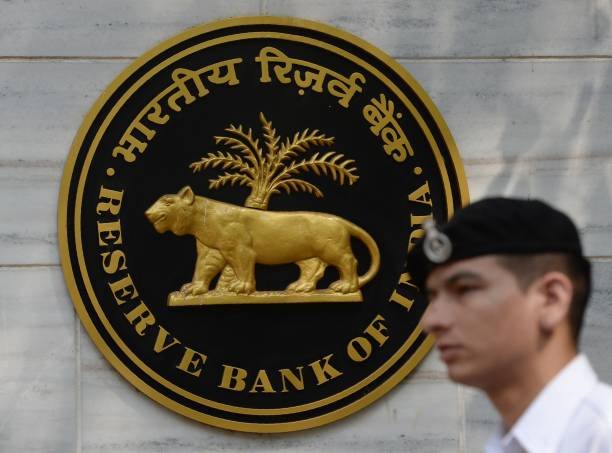Leaders of central trade unions say key sectors such as power, mines, minerals, coal, ports and public transport were affected; they claim it was a bandh-like situation in Puducherry, Assam, Bihar, Jharkhand, Tamil Nadu, Punjab, Kerala, West Bengal, Odisha, Karnataka, Goa, Meghalaya, Manipur
More than 25 crore workers participated in the nationwide general strike on Wednesday (July 9, 2025) against the policies of the Union government, particularly for scrapping the four Labour Codes, the platform of 10 central trade unions (CTUs) said. The leaders of the unions, addressing a workers’ rally in New Delhi, said key sectors such as power, mines, minerals, coal, ports and public transport were affected by the strike.
The CTUs said in a statement that there were very large mobilisations in rural India and also at block-sub-division levels by informal sector workers, agricultural labour and farmers and other sections of common people. “Participation of students and youth was quite visible in many States. The rank and file of the Samyukt Kisan Morcha [SKM] and joint front of agricultural labour unions played a significant role in the mobilisation in rural India,” they added.
New Delhi, July 9, 2025 — In a sweeping show of labour strength, more than 25 crore (250 million) workers across India have joined today’s Bharat Bandh, organized by the ten central trade unions—INTUC, AITUC, HMS, CITU, AIUTUC, TUCC, SEWA, AICCTU, LPF, and UTUC—along with support from farmer and rural labour groups
🇮🇳 Bharat Bandh: Over 25 Crore Workers Stage Unprecedented Nationwide Strike
New Delhi, July 9, 2025 – In what trade unions are terming one of the largest labour actions in India’s history, more than 25 crore (250 million) workers took part in a nationwide Bharat Bandh on Wednesday. The strike was called by a coalition of ten central trade unions, joined by farmer groups and rural workers, protesting against a slew of “anti‑worker, anti‑farmer and pro‑corporate” government policies and labour reforms newsclick.in.
🚩 Why This Strike?
Union leaders highlight several grievances:
- New labour codes — designed by the government to consolidate labour laws — are viewed as weakening workers’ rights by curbing freedom to strike, increasing permissible work hours, and reducing accountability for employers couriermail.com.au+15outlookindia.com+15timesofindia.indiatimes.com+15.
- Privatisation of public sector units, expanding contractual labour, stagnant wages, and the shift away from formal employment have sparked widespread anxiety.
- Rural distress — rising costs and lack of decent PAY for farmers and agricultural labourers — have deepened the movement’s roots, particularly in India’s rural belt.
- The unions have also demanded a minimum wage of ₹26,000, restoration of the old pension scheme, and a halt on further privatisation.
This wave of discontent culminated in today’s strike, dubbed a “grand success” by union leaders outlookindia.comtimesofindia.indiatimes.com+3newsclick.in+3economictimes.indiatimes.com+3.
🔄 Scale & Impact
The strike sent shockwaves across the country on July 9:
- Banking and insurance sectors faced near‑paralysis, with many branches closed and cheque clearances delayed nationalheraldindia.com+15newsclick.in+15timesofindia.indiatimes.com+15timesofindia.indiatimes.com.
- Postal services came to a standstill in numerous states.
- Coal mining, highway operations, factories, and state-run units experienced a widespread shutdown.
- Public transport — including buses, trams, ferries, and metros — saw major interruptions thehansindia.com+1economictimes.indiatimes.com+1deccanherald.com+15outlookindia.com+15timesofindia.indiatimes.com+15.
- There were stoppages in Government services and railways, particularly in stronghold states like Kerala, Assam, Odisha, and Telangana .
- Industrial corridors and clusters in West Bengal, Tamil Nadu, Delhi, and Maharashtra saw partial to full closures economictimes.indiatimes.com+10nationalheraldindia.com+10archive.siasat.com+10.
🌾 Farmers & Rural Labourers Amplify Voices
The movement garnered massive support from rural India:
- Led by the Samyukta Kisan Morcha and agricultural labour unions, rural workers played a pivotal role in mobilising villages across states deccanherald.com+15newsclick.in+15newsclick.in+15.
- In some regions, demonstrations materialised near block offices, railway crossings, and block‑level centers, tying labour issues with agrarian distress timesofindia.indiatimes.com.
In Bihar, protesters blockaded tracks at Jehanabad station, symbolising their influence over grassroots mobilisation patrika.com.
🎙️ Union Leaders React
Harbhajan Singh Sidhu of the Hind Mazdoor Sabha remarked:
“The Bharat Bandh will be disrupting services across the country. Banking, postal, coal mining, factories, state transport services will be affected due to the strike.”
newsclick.in+15outlookindia.com+15nationalheraldindia.com+15
Government silence has intensified criticism, with unions accusing authorities of ignoring the union’s 17‑ and 44‑point demand lists, previously submitted to Labour Minister Mansukh Mandaviya last year indiatimes.com.
📌 What Remained Functional
While the strike crippled many sectors, essential and emergency services remained operational:
- Hospitals, ambulances, electricity and water suppliers, and police forces continued to run, averting a humanitarian crisis marathi.indiatimes.com.
- Schools, most private offices, and arming forces remained open in several areas, though services like buses, postal deliveries, and banking experienced disruptions.
- Railways adopted contingency timetables, faced delays and possible reroutings, especially in states endorsing the bandh timesofindia.indiatimes.com+4patrika.com+4indiatimes.com+4timesofindia.indiatimes.com+4deccanherald.com+4indiatimes.com+4.
🔮 What Happens Next?
Union statements indicate this is only the first phase of a coordinated, prolonged campaign:
- Plans are underway for continued agitation at state and sector levels, culminating in large-scale future crackdowns indiatimes.com+2thehansindia.com+2economictimes.indiatimes.com+2.
- The unions have vowed to escalate strategies — including sector-wise strikes, block-level road or rail disruptions, and possible extended nationwide shutdowns — until their demands are addressed.
This strike marks a watershed moment in India’s labour history — reminiscent of record‑breaking general strikes in 2019 and 2020, both logging participation above 25 crore workers apnews.com+15newsclick.in+15patrika.com+15hindustantimes.com+15patrika.com+15timesofindia.indiatimes.com+15apnews.com+9outlookindia.com+9economictimes.indiatimes.com+9timesofindia.indiatimes.com.
As the dust settles, both government and opposition forces are weighing in. With foundational labour and agrarian grievances now central to policy debates, the coming days will be crucial in determining whether this movement sparks legislative response — or intensifies the standoff.
Let me know if you’d like a deeper breakdown of impact by region, government reaction, or opposition perspectives.
Bharat Bandh 2025: Recent News Coverage

Bharat Bandh hits services across India; 10 key updates from major cities
Indian workers go on a daylong nationwide strike against Modi’s economic reforms

Bharat Bandh: Over 25 crore workers to strike on July 9; public services likely to be hit

